Navigating the complexities of customs clearance can often feel daunting, but a well-crafted letter can make all the difference. Whether you're an individual importing personal items or a business managing international shipments, clearly communicating your needs is essential. In this article, we'll explore a customizable letter template designed to streamline your customs clearance requests and help ensure a smoother process. Ready to simplify your customs experience? Let's dive in!
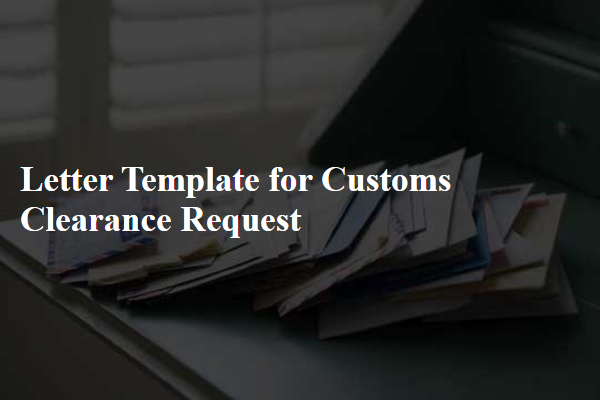
Sender and recipient information
A customs clearance request involves key information that ensures efficient processing and delivery of goods across international borders. The sender's information typically includes the full name, complete address, phone number, and email, which allows customs officers to contact the sender in case of discrepancies or additional requirements. The recipient's information similarly encompasses the complete name, address, telephone number, and email, ensuring that goods reach the intended destination without delays. Specific identifiers such as tax identification numbers or company registration numbers may also be vital for both parties, establishing legitimacy and facilitating the release of goods from customs. Clear and accurate details expedite the clearance process, minimizing potential fines or hold-ups.
Subject line and purpose
Customs clearance for imported goods involves the submission of documentation to the relevant authorities to ensure compliance with local regulations. Precise information, including invoice numbers, descriptions of goods, and Harmonized System (HS) codes, is essential to avoid delays. A detailed breakdown of customs duties, taxes, or tariffs applicable under local law ensures smooth processing. Clear communication about shipment details, including the arrival date at the port, the shipping method (such as air freight), and the consignee's contact information is critical for efficient handling. Properly preparing for the customs clearance process minimizes risks associated with taxation and seizure of goods.
Detailed shipment description
The shipment consists of medical equipment, totaling approximately 150 units, including portable ultrasound machines, worth an estimated $250,000. The origin of the shipment is from a certified manufacturer located in Tokyo, Japan, with export documentation (HS code 9018) validating compliance with international standards. All items are packaged in custom cartons, measuring 30 inches x 24 inches x 18 inches, ensuring protection during transportation. The intended destination is a hospital in New York City, New York, with specific instructions for urgent delivery due to supply shortages. Accompanying the shipment are the necessary invoices, packing lists, and certificates of authenticity required for customs clearance.
Required documentation list
Customs clearance processes require specific documentation to ensure compliance with regulations. Commonly required documents include the Bill of Lading (a shipping document issued by the carrier to acknowledge receipt of cargo), the Commercial Invoice (detailing the transaction between buyer and seller), the Packing List (providing a detailed inventory of the shipment contents), and Customs Declaration Forms (required by authorities to assess duties and taxes). Additional documents may include certificates of origin (confirming the country where the goods were manufactured), import permits (issued by government agencies for restricted items), and insurance certificates (protecting against loss or damage during transit). Properly compiling these documents is essential for smooth clearance and to avoid delays at ports such as Los Angeles International Airport or Newark Liberty International Airport, where busy logistics operations occur.
Contact information for follow-up
In addressing customs clearance requests for international shipments, providing accurate contact information is essential for expediting communication. A complete phone number, including country code, allows customs officials to reach out promptly for clarifications. An email address offers a written channel for updates or document requests. It is also beneficial to state office hours in local time zones to ensure accessibility. Including a name of a designated contact person familiar with the shipment can help facilitate the process. Providing these details ensures efficient interactions with customs authorities, ultimately enhancing the speed and effectiveness of clearance activities, vital for timely delivery of goods.

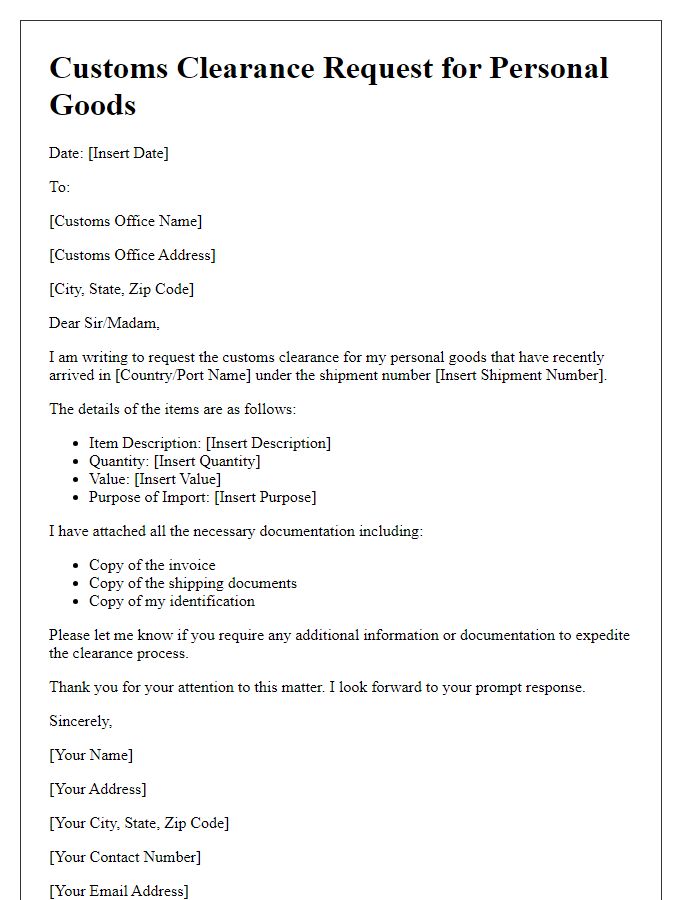
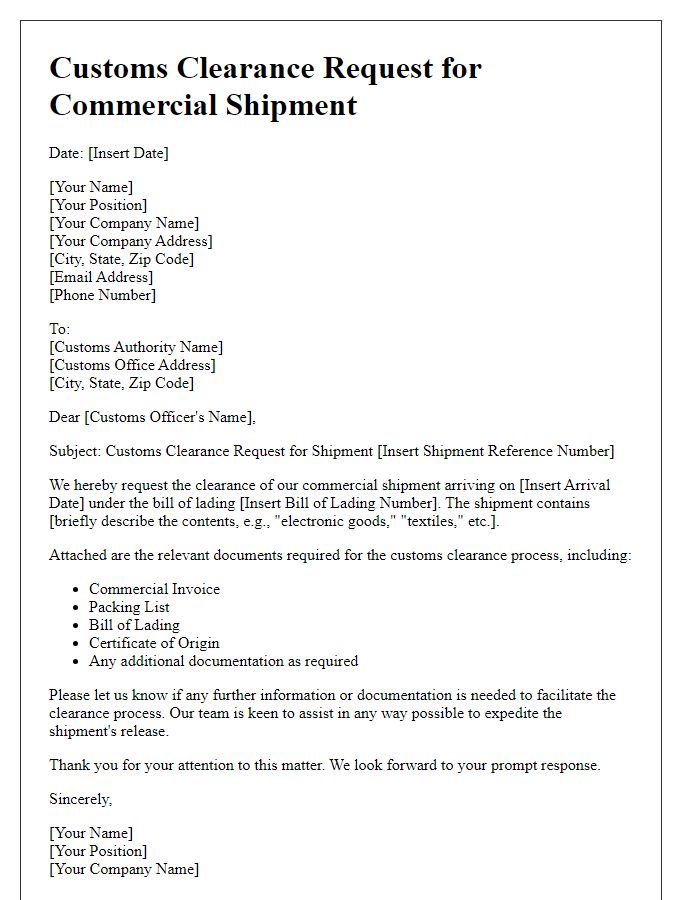
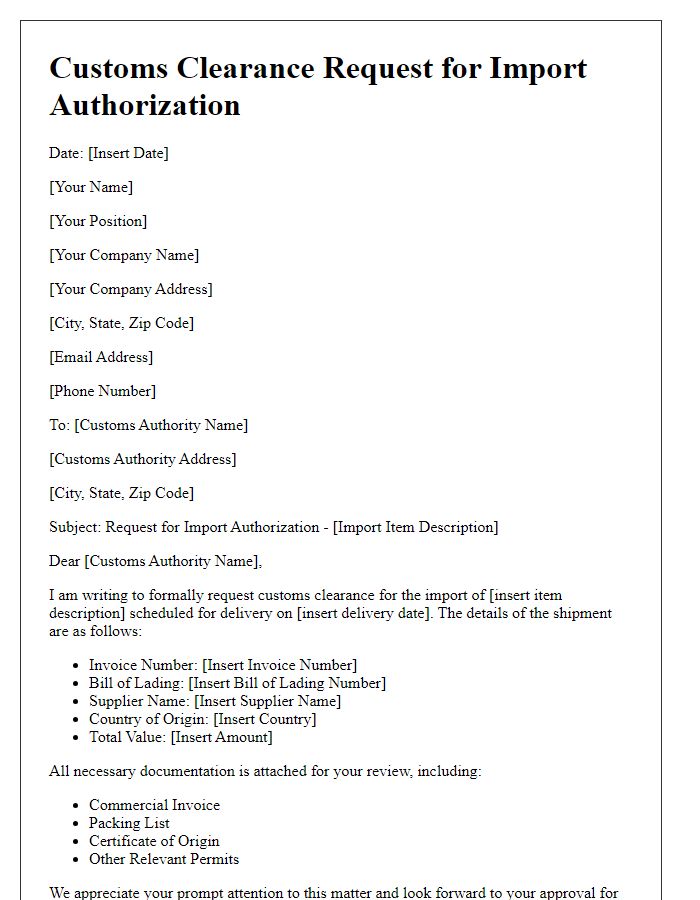
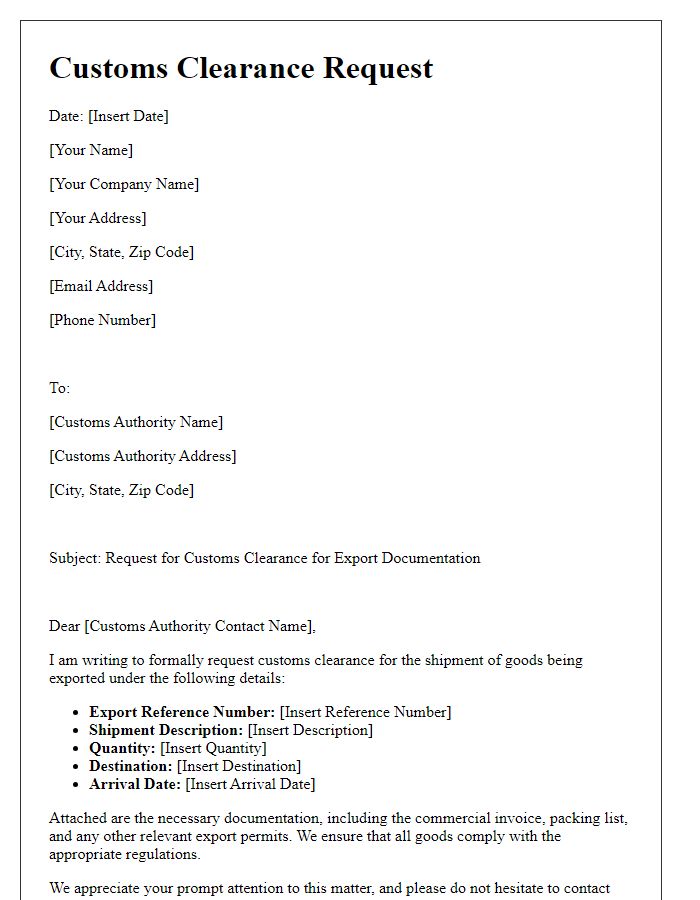
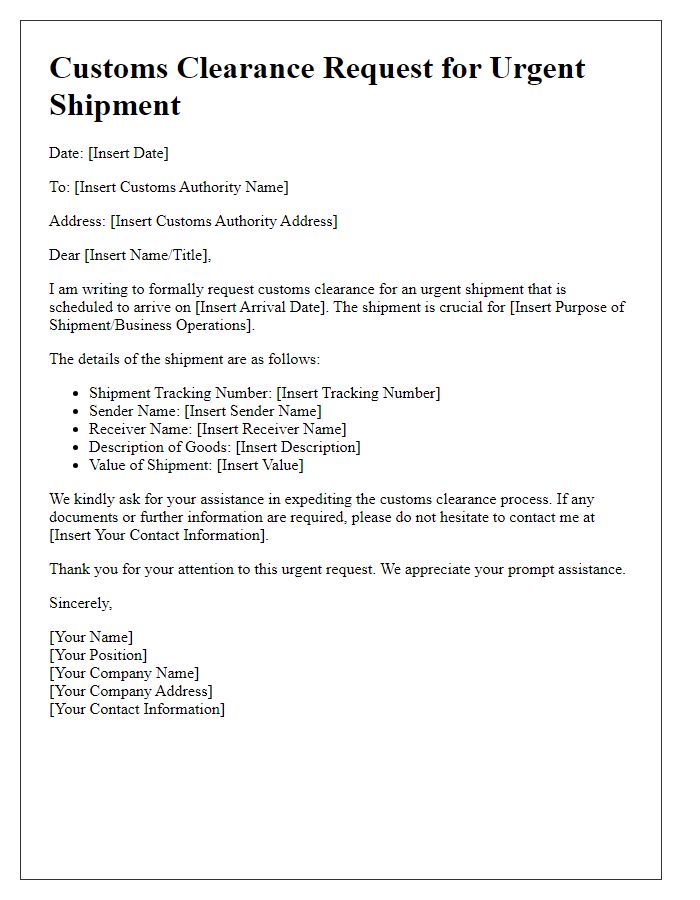
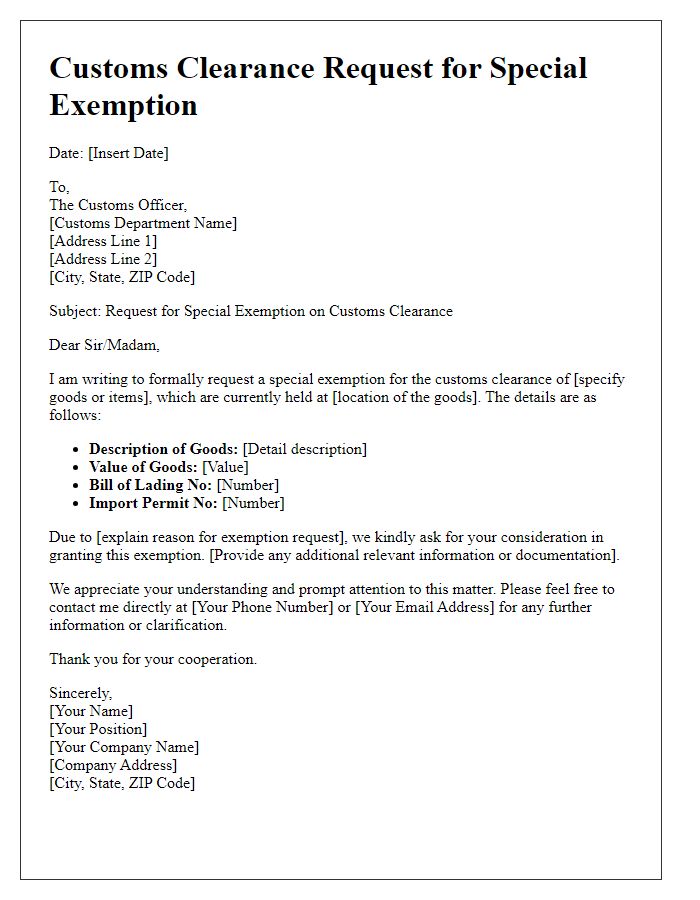
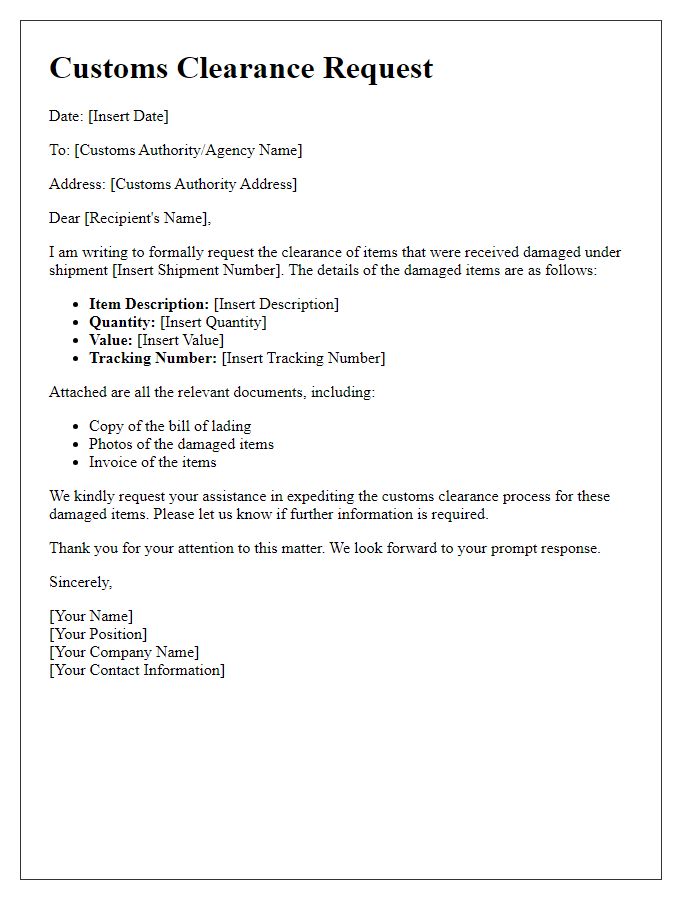
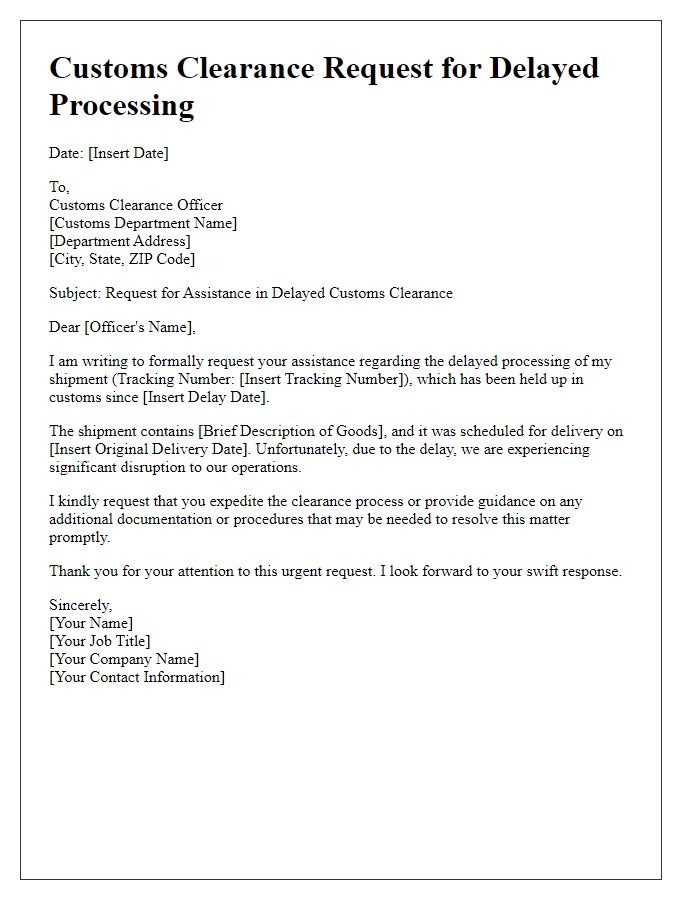
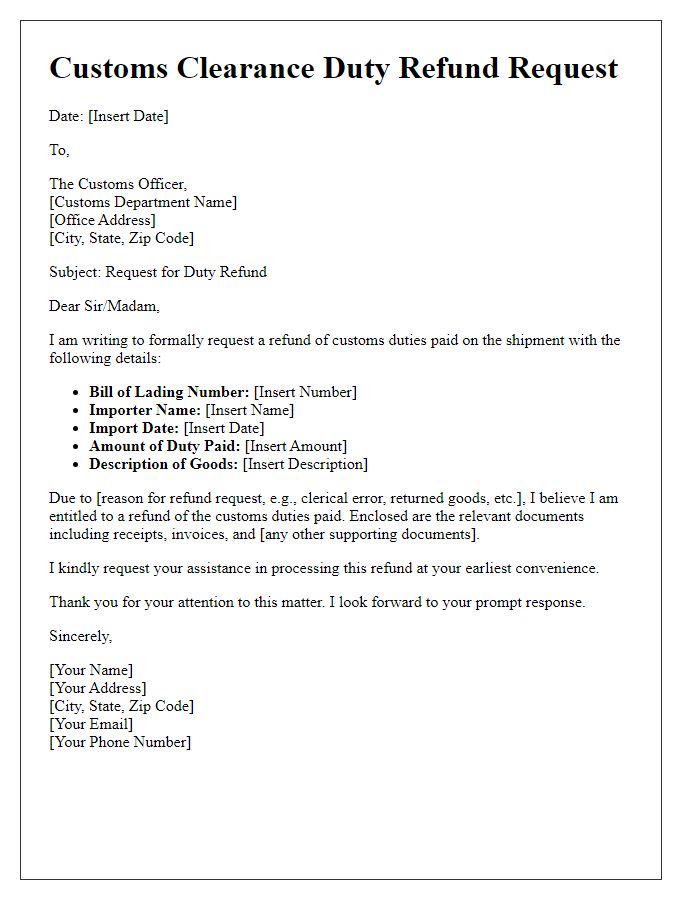
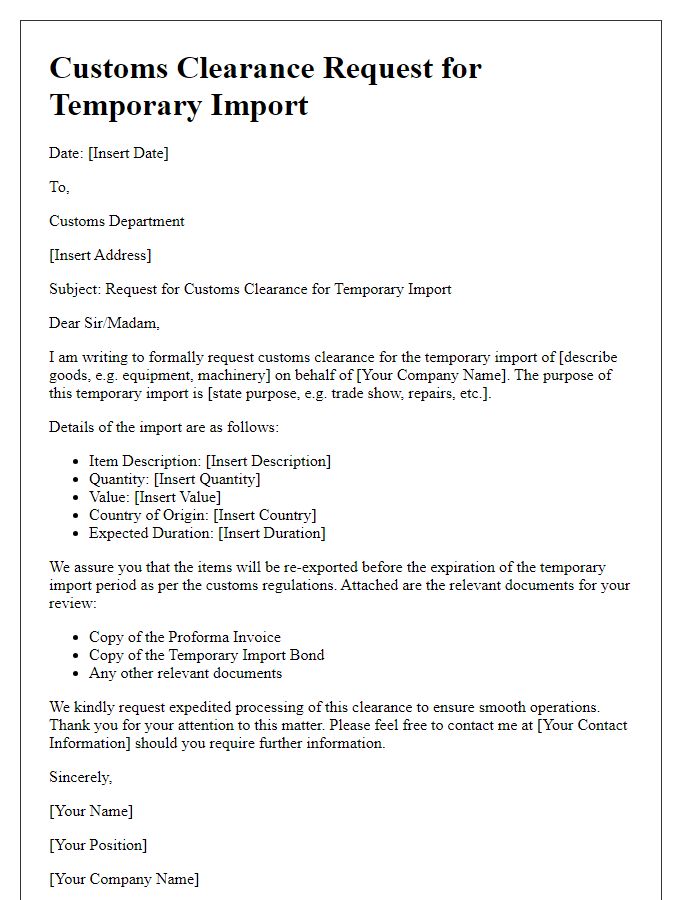


Comments